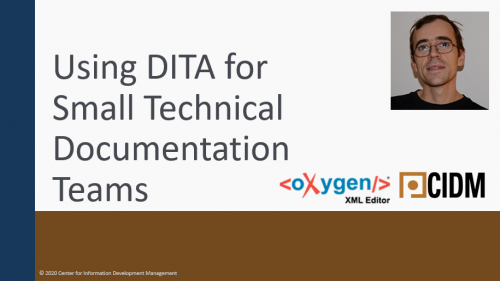Recorded on
September 14, 2023
 Intelligent terminology retrieval and management with TermCatch and Kalcium Quickterm
Intelligent terminology retrieval and management with TermCatch and Kalcium Quickterm
A centrally managed and validated termbase forms the basis for consistent and correct company terminology. One of the challenges of managing such a termbase is that terminology is spread across different areas of your company and is constantly being changed and created. In one department, a new Excel list suddenly appears. In others, your terminology runs free in all manner of texts, from technical manuals and marketing brochures to software user interfaces and your own website. But how can you capture this "wild" terminology, tame it, and integrate it into your existing terminology? And how can AI support you in this and other terminology management tasks?
In our webinar we will show you:
- Where terminology may be hiding in your company
- How to extract, cluster, harmonize, and validate it
- How to use AI in order to be more efficient in your terminology work
- How the new TermCatch integration for the established terminology management and workflow tool Kalcium Quickterm supports you in this process
Presented by: Klaus Fleischmann and Mikael Lundahl

Klaus Fleischmann studied translation and IT in Vienna, holds an MA in Conference Interpreting from Monterey, California, and a MAS in Technical Communication from Krems, Austria. In 1996, he founded Austria-based Kaleidoscope, a company implementing content, translation, and terminology management processes for internationally active companies. Kaleidoscope develops online collaboration software for enterprise-level terminology workflow, translator query management, in-country review etc., making the translation quality process comprehensible and strategically manageable. In 2007, he became CEO of Austria´s leading LSP, Eurocom Translation Services. Always active in the industry, Klaus got voted into the Gala Board of Directors in 2015 and 2017
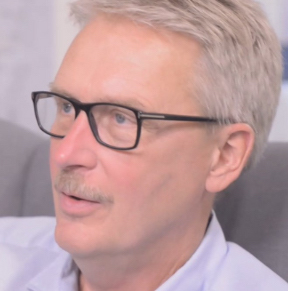
Mikael Lundahl works with language processes and language technology. From content creation to translation and publishing. From marketing material to technical documentation and software strings. His focus is on how terminology, with processes and tools, can support both the writing and translation processes.
Fodina Language Technology partners with and sells products from Kaleidoscope and Acrolinx. But Fodina also develops tools that help customers to build their company terminologies based on existing documentation, standards, or competitor's web information. AI-supported term extraction from many file formats and automated clustering of identified terms into concepts. Through integrations to both Acrolinx and Kaleidoscope products, we have full tool support for the terminology process that we recommend customers to use. Our tools support working with terms in English, German, and Swedish.

 Helen joined Stilo as a technical editor. She now works closely with Stilo Migrate customers, helping them to analyze their legacy content and configure appropriate mapping rules. She also provides Migrate customer training and support. Helen has helped Migrate customers to convert millions of pages of content to DITA and custom XML. Helen holds a Bachelor of Arts in English from St. Francis Xavier University in Antigonish, Nova Scotia, and has pursued graduate studies at Queen’s University in Kingston, Ontario. Email: [email protected] LinkedIn: https://www.linkedin.com/in/helen-st-denis-b1b60214/
Helen joined Stilo as a technical editor. She now works closely with Stilo Migrate customers, helping them to analyze their legacy content and configure appropriate mapping rules. She also provides Migrate customer training and support. Helen has helped Migrate customers to convert millions of pages of content to DITA and custom XML. Helen holds a Bachelor of Arts in English from St. Francis Xavier University in Antigonish, Nova Scotia, and has pursued graduate studies at Queen’s University in Kingston, Ontario. Email: [email protected] LinkedIn: https://www.linkedin.com/in/helen-st-denis-b1b60214/ 
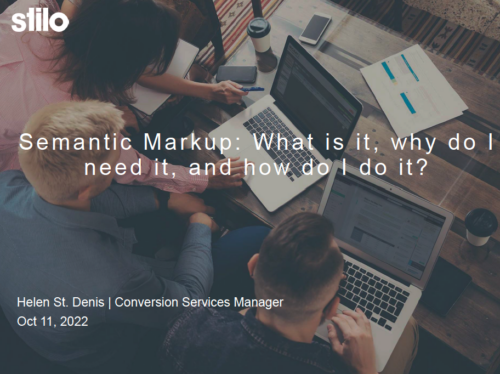



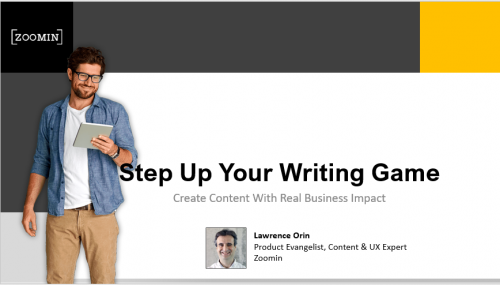
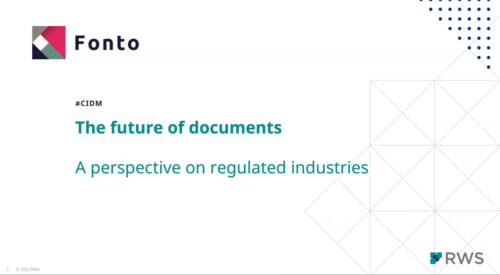


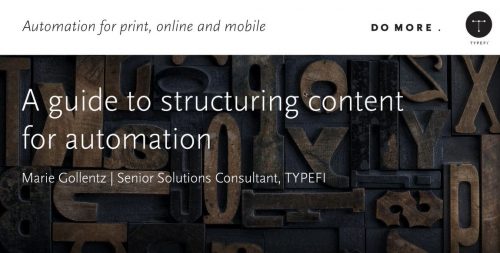



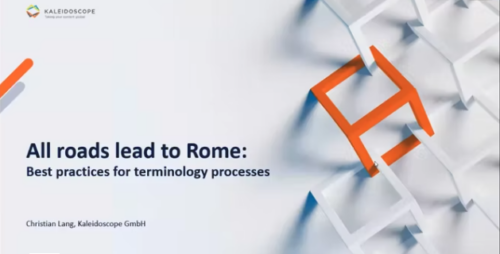

 Christian Lang, Technical Consultant, has a wide range of experience and interests in the language field, proven by his degree in Japanese studies and translation. He first became involved with terminology management as a freelance translator for the European Patent Office. Since then, it has become one of his hobbies, as has research in the field of NLP on topics such as machine translation, automatic term extraction, and concept maps.
Christian Lang, Technical Consultant, has a wide range of experience and interests in the language field, proven by his degree in Japanese studies and translation. He first became involved with terminology management as a freelance translator for the European Patent Office. Since then, it has become one of his hobbies, as has research in the field of NLP on topics such as machine translation, automatic term extraction, and concept maps.

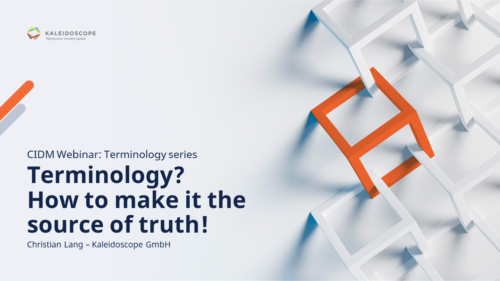



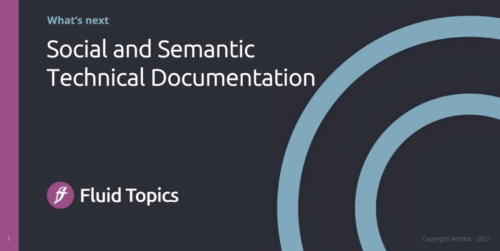
 Fabrice Lacroix is a serial entrepreneur and a technology pioneer. He has been working for 25 years on the development of innovative solutions around search technology, content enrichment and AI. He is the founder of Fluid Topics, the leading Content Delivery Platform that reinvents how users search, read and interact with technical documentation.
Fabrice Lacroix is a serial entrepreneur and a technology pioneer. He has been working for 25 years on the development of innovative solutions around search technology, content enrichment and AI. He is the founder of Fluid Topics, the leading Content Delivery Platform that reinvents how users search, read and interact with technical documentation. 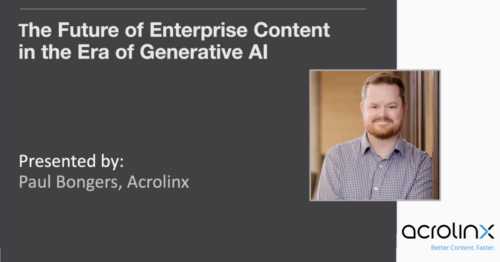

 Paul Bongers is a strategist, technologist, and a SaaS generalist. In his role as VP Strategy, Paul shapes the Acrolinx product strategy. His team works closely with all departments across the business to foster innovation and expand value for Acrolinx customers.
LinkedIn:
Paul Bongers is a strategist, technologist, and a SaaS generalist. In his role as VP Strategy, Paul shapes the Acrolinx product strategy. His team works closely with all departments across the business to foster innovation and expand value for Acrolinx customers.
LinkedIn: 
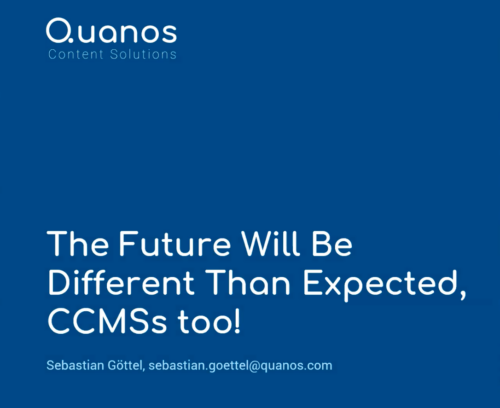

 Sebastian Göttel is Head of Marketing and Product Management at Quanos Content Solutions GmbH. The computer scientist has been involved with XML editing systems and content delivery since 1998. In the Tekom environment, he worked on version 1.0 of the iiRDS standard.
Sebastian Göttel is Head of Marketing and Product Management at Quanos Content Solutions GmbH. The computer scientist has been involved with XML editing systems and content delivery since 1998. In the Tekom environment, he worked on version 1.0 of the iiRDS standard. 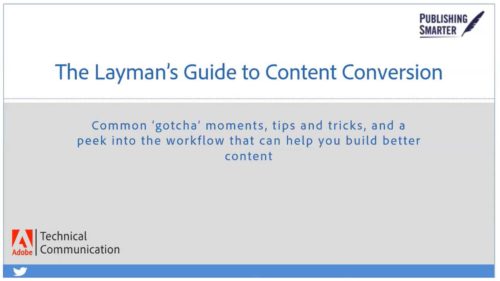
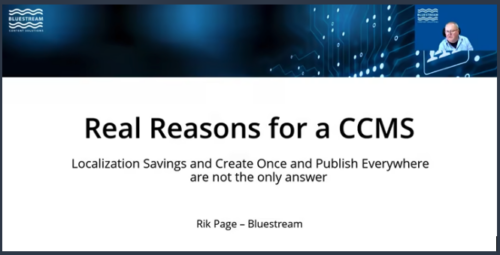
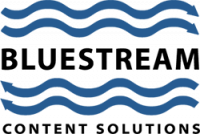
 Rik has worked with component content and document management solutions for over 20 years. He has worked with custom DTDs and Schemas, S1000D, iSpec2200, and DITA, together with various document and content management systems, including Documentum, SharePoint, XDocs, Ixiasoft, easyDITA, Astoria, and Vasont.
His practical experience ranges from high-volume data capture and content creation to dynamic multichannel delivery in various industries, including banking and finance, manufacturing, central government, and education. In addition, Rik has participated in multiple consultancy projects and helped formulate innovative solutions throughout Europe and North America.
Rik is also an advocate of Documentation 4.0, a new concept reflecting the demands on content/documentation that results from moving to Industry 4.0 and ‘smart’ manufacturing.
Rik has worked with component content and document management solutions for over 20 years. He has worked with custom DTDs and Schemas, S1000D, iSpec2200, and DITA, together with various document and content management systems, including Documentum, SharePoint, XDocs, Ixiasoft, easyDITA, Astoria, and Vasont.
His practical experience ranges from high-volume data capture and content creation to dynamic multichannel delivery in various industries, including banking and finance, manufacturing, central government, and education. In addition, Rik has participated in multiple consultancy projects and helped formulate innovative solutions throughout Europe and North America.
Rik is also an advocate of Documentation 4.0, a new concept reflecting the demands on content/documentation that results from moving to Industry 4.0 and ‘smart’ manufacturing.
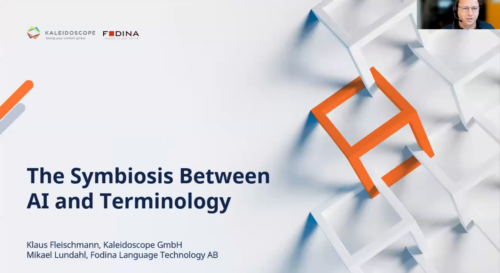
 Klaus Fleischmann studied translation and IT in Vienna, holds an MA in Conference Interpreting from Monterey, California, and a MAS in Technical Communication from Krems, Austria. In 1996, he founded Austria-based Kaleidoscope, a company implementing content, translation, and terminology management processes for internationally active companies. Kaleidoscope develops online collaboration software for enterprise-level terminology workflow, translator query management, in-country review etc., making the translation quality process comprehensible and strategically manageable. In 2007, he became CEO of Austria´s leading LSP, Eurocom Translation Services. Always active in the industry, Klaus got voted into the Gala Board of Directors in 2015 and 2017
Klaus Fleischmann studied translation and IT in Vienna, holds an MA in Conference Interpreting from Monterey, California, and a MAS in Technical Communication from Krems, Austria. In 1996, he founded Austria-based Kaleidoscope, a company implementing content, translation, and terminology management processes for internationally active companies. Kaleidoscope develops online collaboration software for enterprise-level terminology workflow, translator query management, in-country review etc., making the translation quality process comprehensible and strategically manageable. In 2007, he became CEO of Austria´s leading LSP, Eurocom Translation Services. Always active in the industry, Klaus got voted into the Gala Board of Directors in 2015 and 2017
 Mikael Lundahl works with language processes and language technology. From content creation to translation and publishing. From marketing material to technical documentation and software strings. His focus is on how terminology, with processes and tools, can support both the writing and translation processes.
Fodina Language Technology partners with and sells products from Kaleidoscope and Acrolinx. But Fodina also develops tools that help customers to build their company terminologies based on existing documentation, standards, or competitor's web information. AI-supported term extraction from many file formats and automated clustering of identified terms into concepts. Through integrations to both Acrolinx and Kaleidoscope products, we have full tool support for the terminology process that we recommend customers to use. Our tools support working with terms in English, German, and Swedish.
Mikael Lundahl works with language processes and language technology. From content creation to translation and publishing. From marketing material to technical documentation and software strings. His focus is on how terminology, with processes and tools, can support both the writing and translation processes.
Fodina Language Technology partners with and sells products from Kaleidoscope and Acrolinx. But Fodina also develops tools that help customers to build their company terminologies based on existing documentation, standards, or competitor's web information. AI-supported term extraction from many file formats and automated clustering of identified terms into concepts. Through integrations to both Acrolinx and Kaleidoscope products, we have full tool support for the terminology process that we recommend customers to use. Our tools support working with terms in English, German, and Swedish.
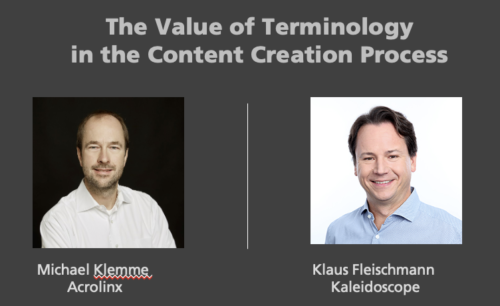


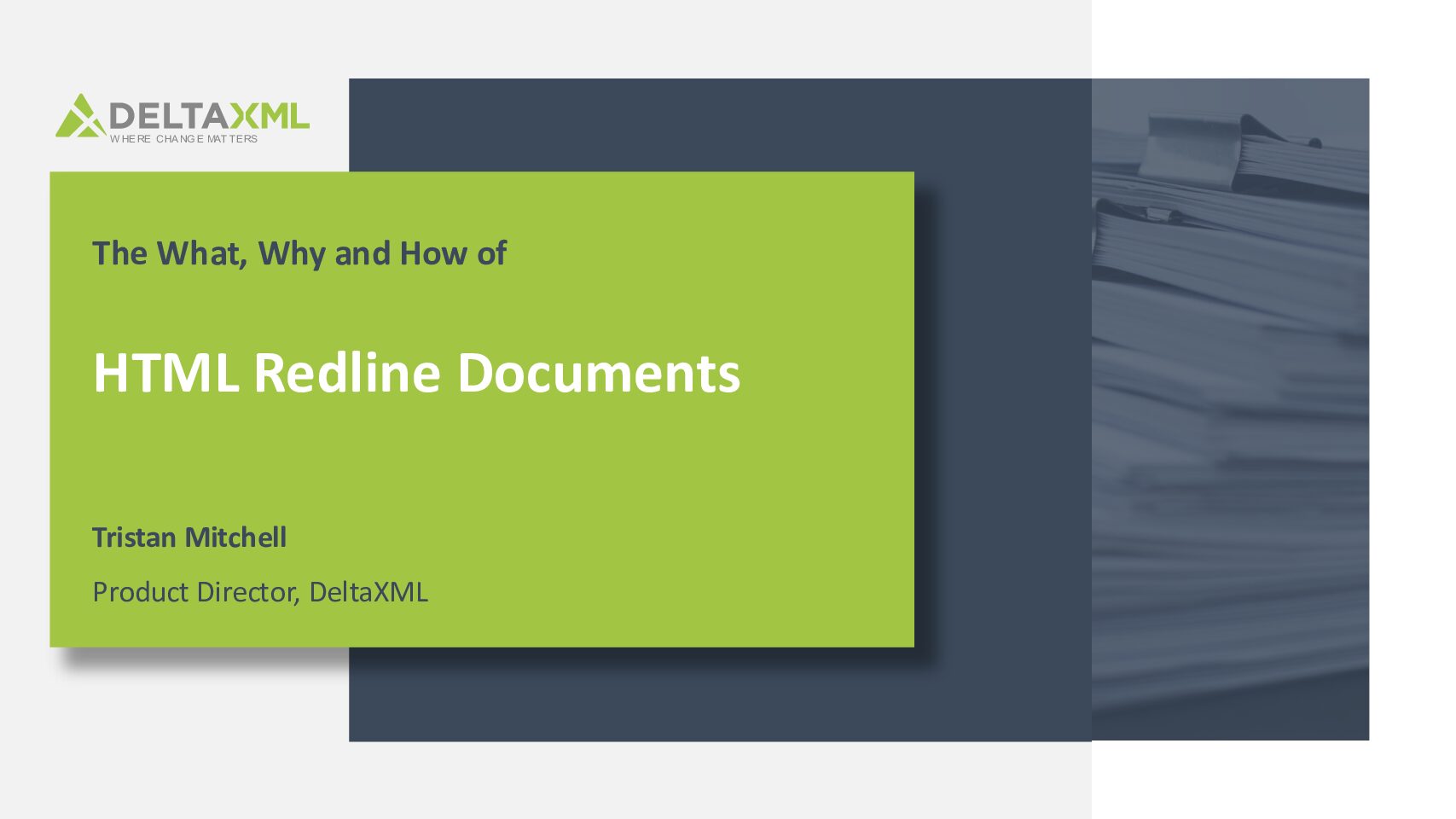
 HTML is used not only as a final delivery format but increasingly as the source format for documentation of all kinds, whether that’s internal product designs or customer-focused technical documentation. Understanding change in those documents is a vital part of your content management workflow.
Join us as we explore the ins and outs of HTML redline documents, looking at how to identify change in HTML, how to visualise it, and how it fits into your toolkit. From text to tables, MathML to SVG, come and discover how to decide what matters in your redline output.
Presented by: Tristan Mitchell, DeltaXML
HTML is used not only as a final delivery format but increasingly as the source format for documentation of all kinds, whether that’s internal product designs or customer-focused technical documentation. Understanding change in those documents is a vital part of your content management workflow.
Join us as we explore the ins and outs of HTML redline documents, looking at how to identify change in HTML, how to visualise it, and how it fits into your toolkit. From text to tables, MathML to SVG, come and discover how to decide what matters in your redline output.
Presented by: Tristan Mitchell, DeltaXML
 Tristan is Product Director at DeltaXML, a technology company with world-leading software products for managing change in structured content. He has a deep understanding of DeltaXML’s product suite and loves to help customers create extra value in their content using change management. Tristan is a father to three daughters, a movie lover, and a keen runner.
Tristan is Product Director at DeltaXML, a technology company with world-leading software products for managing change in structured content. He has a deep understanding of DeltaXML’s product suite and loves to help customers create extra value in their content using change management. Tristan is a father to three daughters, a movie lover, and a keen runner.
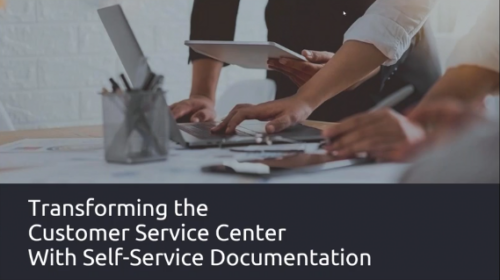
 Alex Masycheff is the CEO of Intuillion Ltd. (
Alex Masycheff is the CEO of Intuillion Ltd. (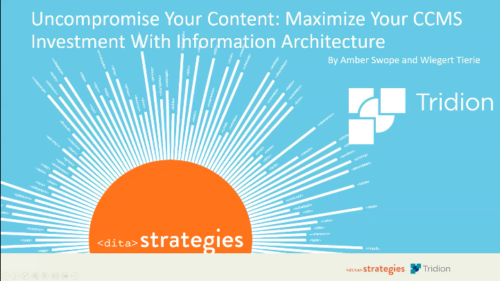


 Amber Swope is an internationally recognized Information Architect, Darwin Information Typing Architecture (DITA) expert, and information architecture (IA) consultant. With over 20 years of information development experience and 15 years of DITA expertise, Amber specializes in helping organizations create opportunity through IA. She helps teams build scalable IA solutions to future-enable their content and empowers team members to advance their architecture as it evolves to meet new business needs.
Amber Swope is an internationally recognized Information Architect, Darwin Information Typing Architecture (DITA) expert, and information architecture (IA) consultant. With over 20 years of information development experience and 15 years of DITA expertise, Amber specializes in helping organizations create opportunity through IA. She helps teams build scalable IA solutions to future-enable their content and empowers team members to advance their architecture as it evolves to meet new business needs.
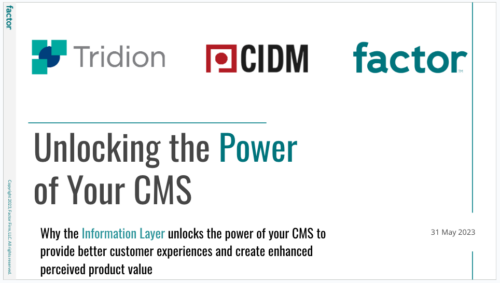
 Chip Gettinger is the VP of Global Solutions Consulting at RWS, he manages a team that works with customers in maximizing global content with RWS. He has experience working with customers to develop global content strategies, business ROI adoption drivers, change management, and technology adoption for component content management systems. He speaks and blogs about customer successes working closely with industry standards, partners, and customers in technology solutions and deployments.
with guests Bram Wessel and Bob Kasenchak, Factor Firm
Chip Gettinger is the VP of Global Solutions Consulting at RWS, he manages a team that works with customers in maximizing global content with RWS. He has experience working with customers to develop global content strategies, business ROI adoption drivers, change management, and technology adoption for component content management systems. He speaks and blogs about customer successes working closely with industry standards, partners, and customers in technology solutions and deployments.
with guests Bram Wessel and Bob Kasenchak, Factor Firm
 With more than two decades as a user-centered design and research professional, Bram Wessel believes that technology should enable natural experiences for real people. Bram has developed human-centered digital experience designs and strategies for such high-impact brands as Adobe, Amazon, Backcountry, the City of Seattle, Crate & Barrel, Disney, Expedia, GE, Group Health, Intel, Lionsgate, MasterCard, Microsoft, Nordstrom, Real, Safeco, Sony, Starbucks, Volvo, UW Medicine, and Warner Brothers.
A tireless advocate for the IA/UX discipline, with many articles to his credit, Bram is a frequent speaker at conferences such as the Information Architecture Summit, UX Week, Lavacon, Webvisions, ConveyUX, Seattle Design Festival, Taxonomy Bootcamp, and regional meetups and workshops. He is committed to educating the next generation of practitioners through his advanced User Experience and certificate Information Architecture classes at the School of Visual Concepts and as a guest lecturer at the University of Washington’s MCDM and MLIS programs.
Bram is a member of the Information Architecture Institute (IAI) and the Seattle chapter of the international Interaction Design Association (IxDA). Bram is a founding partner at Factor. In his spare time, Bram enjoys fly-fishing. shellfish farming, and making wine.
With more than two decades as a user-centered design and research professional, Bram Wessel believes that technology should enable natural experiences for real people. Bram has developed human-centered digital experience designs and strategies for such high-impact brands as Adobe, Amazon, Backcountry, the City of Seattle, Crate & Barrel, Disney, Expedia, GE, Group Health, Intel, Lionsgate, MasterCard, Microsoft, Nordstrom, Real, Safeco, Sony, Starbucks, Volvo, UW Medicine, and Warner Brothers.
A tireless advocate for the IA/UX discipline, with many articles to his credit, Bram is a frequent speaker at conferences such as the Information Architecture Summit, UX Week, Lavacon, Webvisions, ConveyUX, Seattle Design Festival, Taxonomy Bootcamp, and regional meetups and workshops. He is committed to educating the next generation of practitioners through his advanced User Experience and certificate Information Architecture classes at the School of Visual Concepts and as a guest lecturer at the University of Washington’s MCDM and MLIS programs.
Bram is a member of the Information Architecture Institute (IAI) and the Seattle chapter of the international Interaction Design Association (IxDA). Bram is a founding partner at Factor. In his spare time, Bram enjoys fly-fishing. shellfish farming, and making wine.



 Peter Tauter, our Vice President of Product Management, is a seasoned professional with a background in computational linguistics, AI, and computer science. With 20+ years in B2B software development and product management, Peter is passionate about technology and how it can improve lives.
Peter Tauter, our Vice President of Product Management, is a seasoned professional with a background in computational linguistics, AI, and computer science. With 20+ years in B2B software development and product management, Peter is passionate about technology and how it can improve lives.
